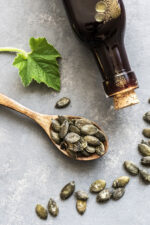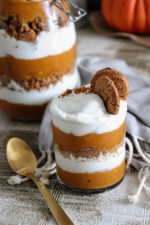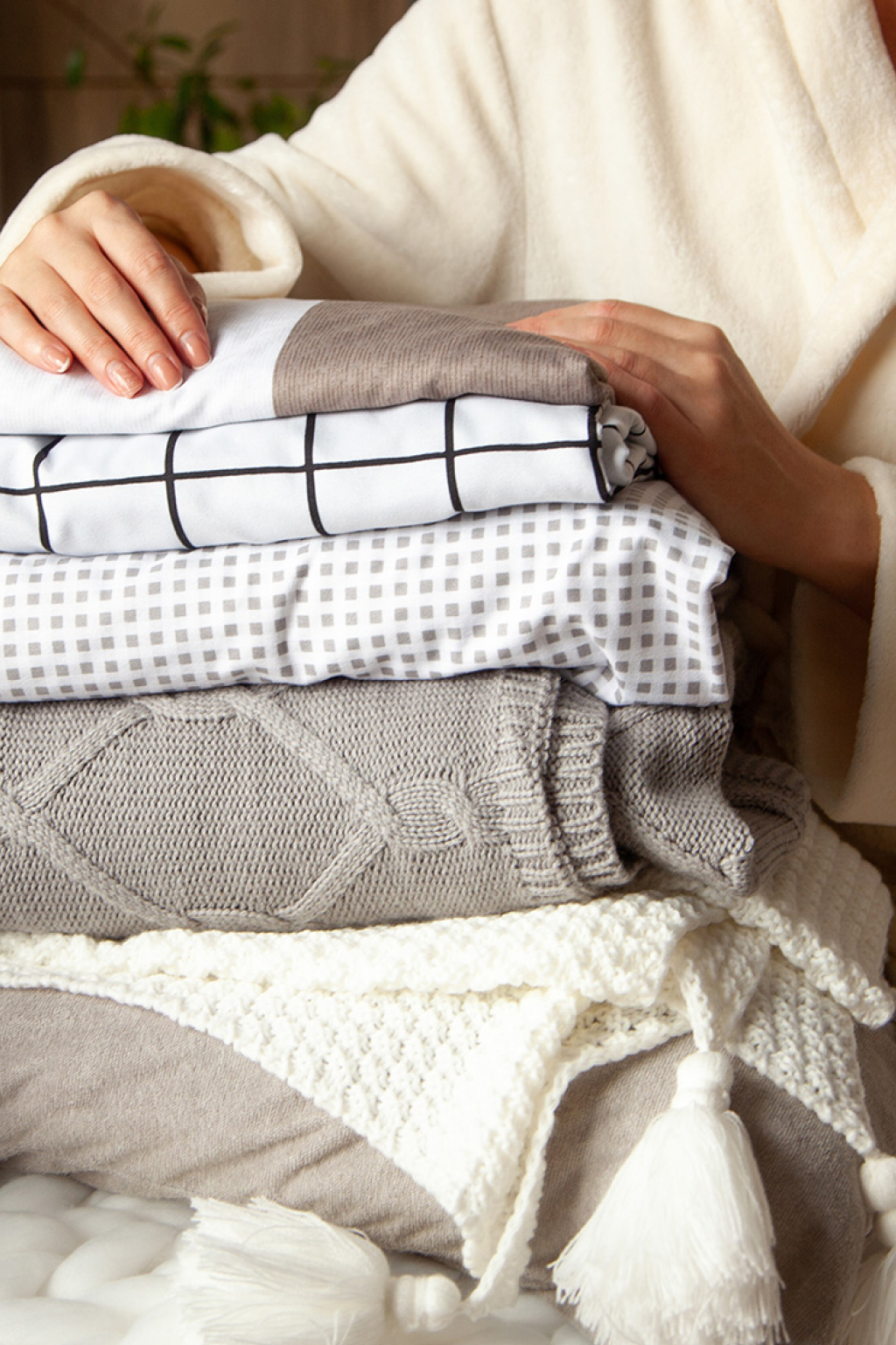A Guide to Sheets
You might not often think about the sheets on your bed, but they can improve how well you sleep while also protecting your mattress. Bedsheets come in a wider variety of options than ever, so use this guide to pick the perfect sheets for you.
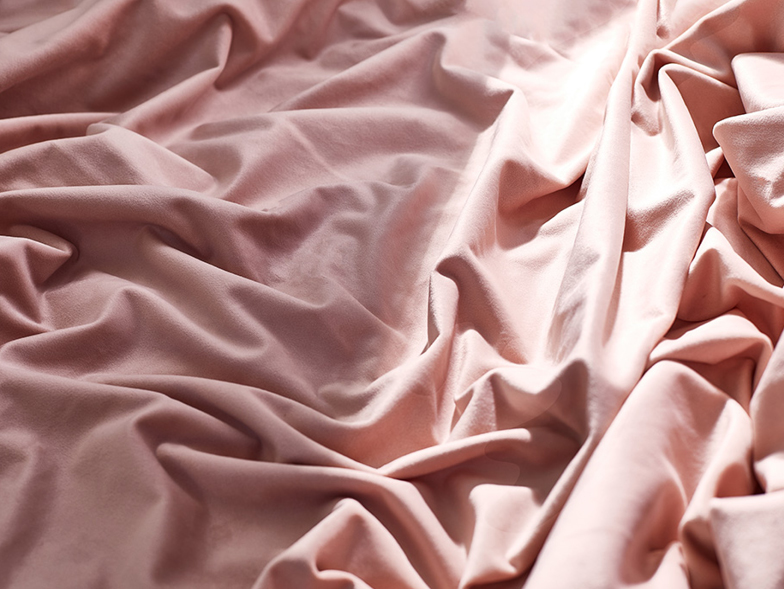
Fabric choice
Bedsheets are often made of cotton, which is easy to care for and is known for its durability, softness, and affordability. But in recent years, other material options have become available, including ones woven from bamboo, eucalyptus, microfiber, or a mix of fabrics. Here are some of the materials most often used in sheets.
- Cotton: This natural fiber can keep you cool while you sleep and is hypoallergenic. Sheets woven with longer cotton fibers, such as Egyptian or Pima cotton, are softer and more luxurious.
- Bamboo: A grass native to five continents, bamboo is used to make linens that are breathable, antibacterial, hypoallergenic, and odor resistant.
- Eucalyptus: Eucalyptus fibers, which are made from the pulp of the eucalyptus evergreen tree, create sheets that are smooth, hypoallergenic, antibacterial, and provide a cool sleep environment.
- Microfiber: These sheets are made from fine strands of polyester, a manmade fiber. While microfiber sheets are known to be soft, they don’t breathe as well as sheets created from natural fibers and aren’t a good choice for warm weather or hot sleepers.
- Silk: Harvested from the cocoons of silkworms, silk fibers can be woven into luxuriously soft, lightweight, and breathable sheets. Mulberry silk, made from silkworms that have fed exclusively on mulberry trees, is the strongest and smoothest type of silk.
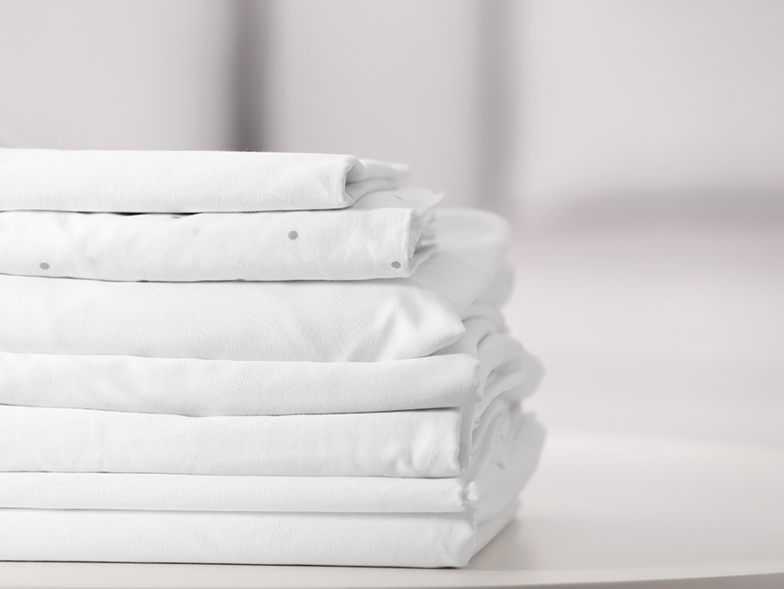
How sheets are woven
The way a sheet is woven can affect its quality and feel. For instance, percale sheets are made of fibers weaved in a simple crisscross pattern, so they are cool, crisp, and lightweight but can wrinkle easily. In contrast, sateen sheets are made from a different weave technique that produces warmer, heavier, and satin-like sheets, while flannel sheets are loosely woven for coziness and warmth.
Other important qualities
- Thread count: This measurement of how many fibers are in a square inch of fabric is most often used for cotton sheets and can indicate how tightly a sheet is woven, with higher thread-count sheets producing warmer sheets and lower counts creating cooler ones. A higher thread count can also make a sheet last longer and feel softer. Try to look for a thread count between 200 and 800 for cotton sheets and at least 300 for bamboo sheets. Be aware that in some cases, manufacturers can increase a sheet’s thread count in ways that don’t necessarily enhance quality.
- Momme count: This is an indicator that reflects the density of the fibers used to make a silk sheet; those with a weight of nineteen momme are considered to be a good blend of quality and affordability, and silk sheets with a higher momme count will be heavier and more luxurious.
- Ounces per square yard: This weight can influence the warmth of flannel sheets; you should look for ones that are between five and six ounces.
- Brushed: Some fabrics are finished with a brushing technique to make them softer. Brushing cotton, microfiber, and flannel sheets can make them softer and warmer; microfiber is often double-brushed, or brushed on both sides.
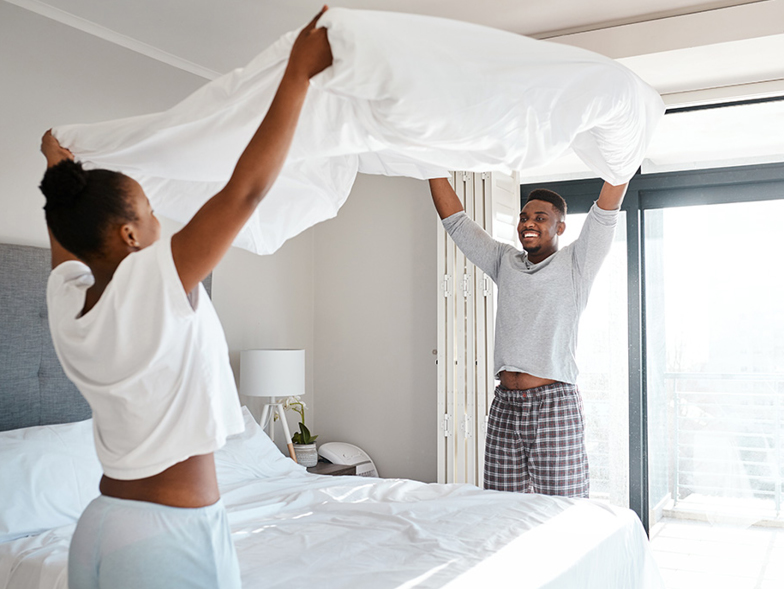
Size
Size is very important when shopping for sheets, so it’s crucial to know the size of your mattress, such as a queen or a king, to get the best fit. If you have a pillowtop mattress or an extra-foam topper, you may need a fitted sheet with deep or extra-deep pockets. Regular sheets are generally up to fourteen inches deep, deep-pocket sheets are at least fifteen inches, and extra-deep-pocket sheets are sixteen or more. Use a measuring tape or yardstick to measure the thickness of your mattress; it’s a good idea to buy sheets slightly deeper than you need so they can stretch to stay on properly.
Laundering
Most experts recommend washing the sheets on your bed at least weekly. It’s best to check your sheets’ care labels for washing and drying instructions, but both cotton and microfiber sheets can normally be washed in a regular warm-water cycle in your washing machine and dried in your dryer. Avoid using hot water or high heat on microfiber sheets because high temperatures can ruin them. Meanwhile, higher-end sheets made from eucalyptus, bamboo, or silk should be laundered separately in cold water with a mild detergent in a gentle cycle and then air- or line-dried or tumbled in a delicate dryer setting.
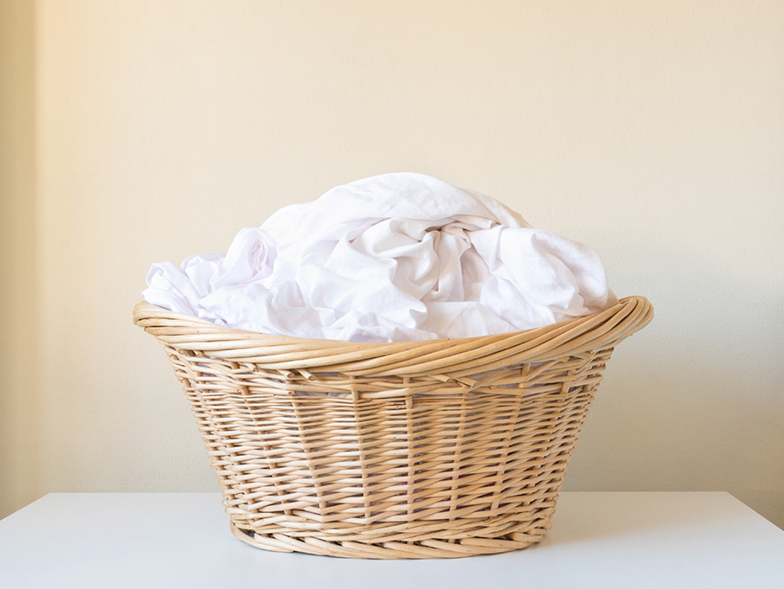
Environmental impact
If you want eco-friendly sheets, look for ones made of all-natural cotton, bamboo, or eucalyptus that have a label such as the Standard 100 by OEKO-TEX, which indicates that they have been tested for safety and deemed to be free of unhealthy or toxic substances.
With careful research and shopping, you can find sheets that will keep you warm and toasty (or cool and cozy) and help you sleep better.

